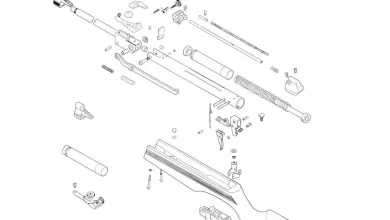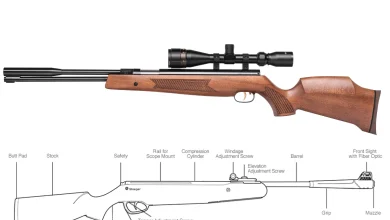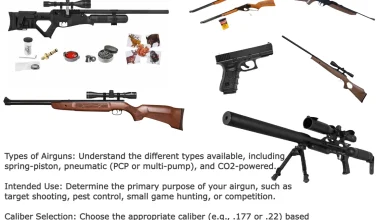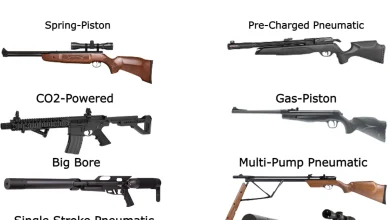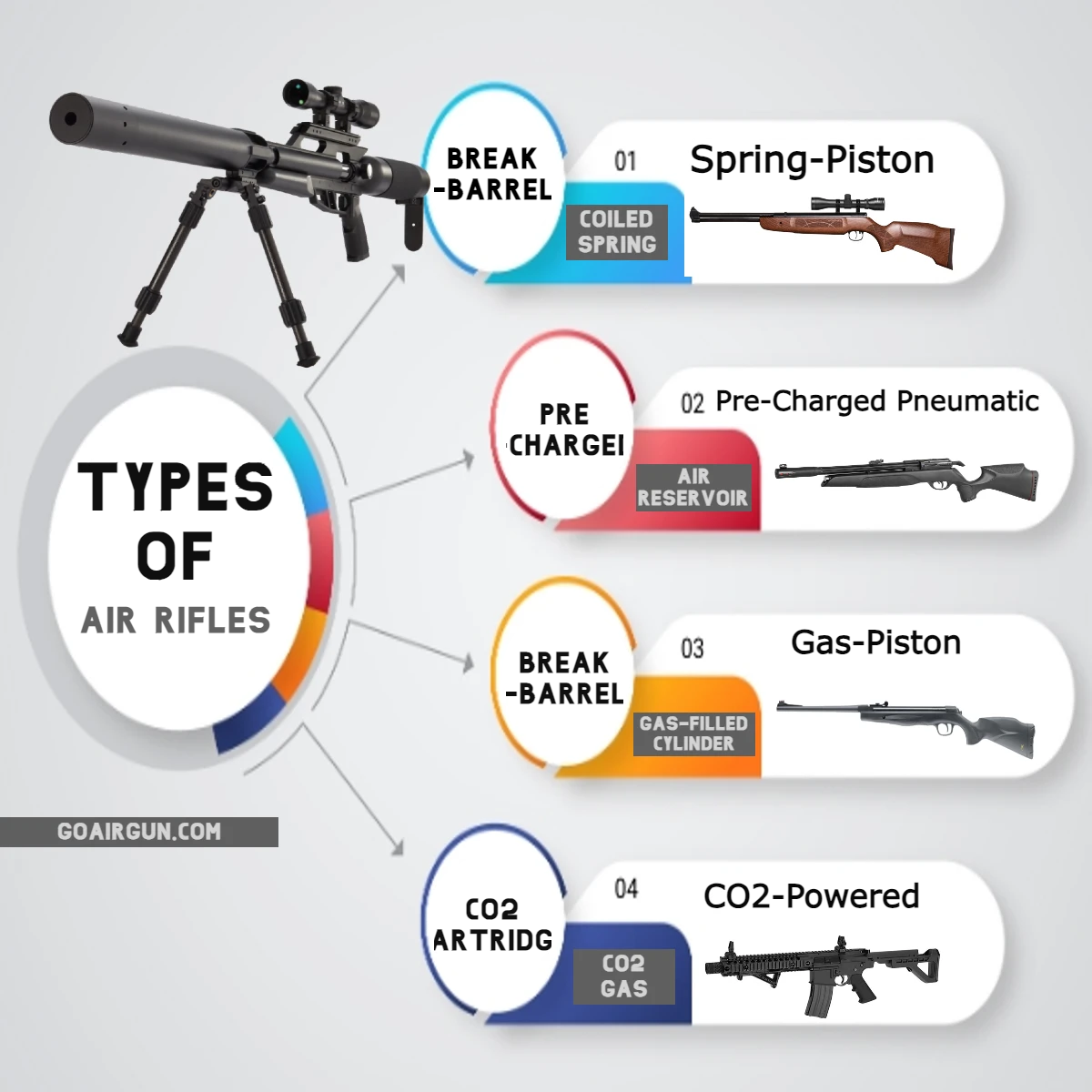
Are you excited to find the air rifle that suits your shooting style like a glove? We’ve covered everything you need to know about the various types of air rifles available, from the smooth shooting of spring-piston rifles to the precision of PCP rifles and the ease of CO2-powered rifles. Whether you’re into recreational shooting, competitive target practice, or pest control, there’s an air rifle tailored just for you. So, don’t wait any longer! Take this newfound knowledge and dive into the world of air rifles. Explore the different models, compare their features, and discover the one that will take your shooting skills to new heights. Happy shooting!
Best 12 Types Of Air Rifles: Find Your Perfect Match!
Each type of air rifle has its unique characteristics and advantages, catering to different shooting preferences and requirements. Whether you’re a seasoned shooter or just starting, there’s a perfect air rifle waiting for you to pick up and enjoy the thrilling shooting experience.
| Type of Air Rifle | Operation | Power Source | Advantages | Disadvantages |
|---|---|---|---|---|
| Spring-Piston | Break-barrel | Coiled Spring | – Affordability – Ease of use – No external power source required | – Recoil and hold sensitivity – Noise and vibration – Limited shot count |
| Pre-Charged Pneumatic (PCP) | Pre-charged air | Air reservoir | – Superior accuracy – Higher shot count – Adjustable power and velocity | – Initial cost – Regular maintenance – External power source dependency |
| Gas-Piston | Break-barrel | Gas-filled cylinder | – Smooth shooting – Consistency in all weather conditions – Durable and long-lasting | – Cost – Limited DIY repairs – Difficulty in cocking |
| CO2-Powered | CO2 cartridge | CO2 gas | – Semi-automatic options – Ease of use – Minimal recoil | – Temperature sensitivity – Limited shot count – Ongoing cost of CO2 cartridges |
| Multi-Pump Pneumatic | Pump-action | Manual pumping | – Variable power control – No external power source required – Great for skill development | – Pumping effort – Shot consistency – Slower rate of fire |
| Single-Stroke Pneumatic | Lever-action | Single pump | – Convenience – Consistency – Quiet operation | – Limited power – Rate of fire – Skill level required for accuracy |
| Break Barrel | Break-barrel | Coiled Spring or Gas-Piston | – Versatility – Power – Affordable | – Manual reloading after each shot – Recoil and hold sensitivity – Limited shot count |
| Side Lever | Side lever | Coiled Spring or Gas-Piston | – Quick reloading – Consistent shooting – Sleek design | – Limited shot count<br>- Price point |
| Underlever | Underlever | Coiled Spring or Gas-Piston | – Accuracy – Reduced recoil – Higher shot count | – Cocking effort – Limited rate of fire |
| Repeating | Lever, bolt, or rotary | CO2 or PCP | – Rapid firepower – Efficiency – Versatility | – Price – Maintenance of magazine mechanism |
| Big Bore | Break-barrel | Coiled Spring or PCP | – Hunting capability – High energy output – Quality construction | – Cost – Ammunition cost |
| Competition | Side lever, bolt | PCP | – Precision accuracy – Customization options – Quality craftsmanship | – Price – Specialized use |
1. Spring-Piston Air Rifles
Spring-piston air rifles, also known as break-barrel air rifles, are one of the most popular types among shooters. These rifles operate on a simple yet ingenious mechanism. When you cock the rifle by breaking the barrel and compressing the spring, it stores potential energy. Upon pulling the trigger, the spring decompresses rapidly, propelling the piston forward. This, in turn, forces a blast of compressed air behind the pellet, propelling it towards the target.
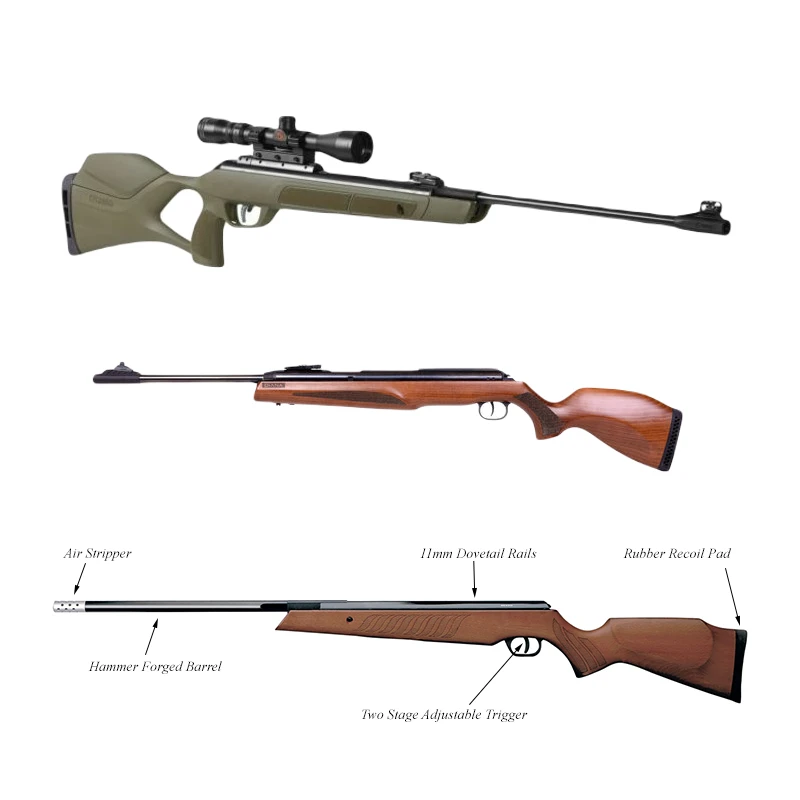
Advantages of Spring-Piston Air Rifles:
- Affordability: Spring-piston air rifles are often more budget-friendly compared to other types, making them an excellent choice for beginners and those on a tight budget.
- Ease of Use: These rifles are straightforward to operate, with minimal moving parts. They are generally easy to maintain and offer consistent shooting performance.
- No External Power Source: Unlike pre-charged pneumatic (PCP) air rifles, spring-piston rifles do not require an external power source like a CO2 cartridge or a scuba tank. As long as you have pellets, you’re good to go!
Disadvantages of Spring-Piston Air Rifles:
- Recoil and Hold Sensitivity: Spring-piston rifles generate recoil upon firing, which can affect accuracy. Shooters need to develop a proper hold and technique to manage this recoil effectively.
- Noise and Vibration: These rifles can be a bit noisy and vibrate during the shooting process, which may not be ideal for all shooting situations.
- Limited Shot Count: Each shot in a spring-piston air rifle needs to be cocked individually, which can slow down the shooting process and limit the number of shots you can take in quick succession.
Spring-Piston Air Rifles on Amazon
Whether you’re a seasoned shooter or just starting, these rifles offer ease of use, affordability, and consistent performance. With customer reviews, detailed product descriptions, and convenient shipping options, Amazon makes it easy for you to make an informed decision and have your dream spring-piston air rifle delivered right to your doorstep. So, what are you waiting for? Take aim, pull the trigger, and let the shooting adventure begin with your new spring-piston air rifle from Amazon.
2. Pre-Charged Pneumatic (PCP) Air Rifles
For serious shooters looking for top-notch performance and accuracy, PCP air rifles are a fantastic choice. PCP rifles work on the principle of using pre-compressed air to propel the pellet. These rifles have an onboard air reservoir that is charged using a high-pressure hand pump, a scuba tank, or a specialized air compressor.
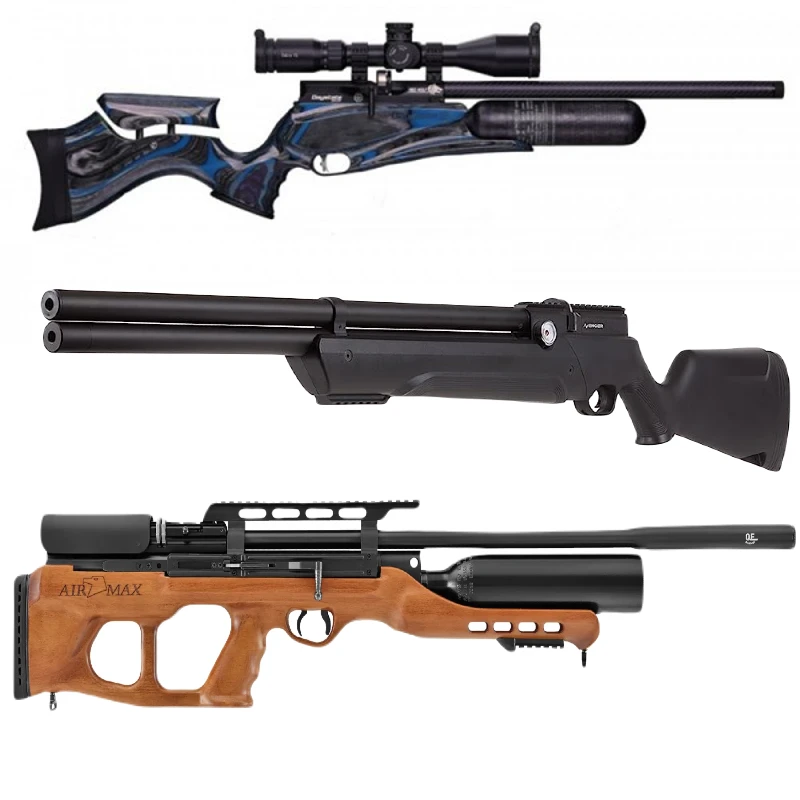
Advantages of PCP Air Rifles:
- Superior Accuracy: PCP rifles are renowned for their exceptional accuracy. The consistent airflow and minimal recoil allow for precise and repeatable shots.
- Higher Shot Count: With their large air reservoirs, PCP rifles offer a higher shot count compared to other types of air rifles. This makes them ideal for extended shooting sessions without the need for frequent refills.
- Adjustable Power and Velocity: Many PCP rifles come with adjustable power settings, allowing shooters to customize the velocity and energy of their shots based on the shooting scenario.
Disadvantages of PCP Air Rifles:
- Initial Cost: PCP air rifles tend to be more expensive than spring-piston or gas-piston rifles. Additionally, you may need to invest in additional equipment like a high-pressure pump or a scuba tank for refilling the air reservoir.
- Regular Maintenance: PCP rifles require regular maintenance, including proper lubrication and sealing, to ensure optimal performance.
- External Power Source Dependency: Unlike spring-piston rifles, PCP air rifles rely on an external power source, which means you need to ensure the air reservoir is adequately charged before each shooting session.
Pre-Charged Pneumatic (PCP) Air Rifles on Amazon
Whether you’re a competitive shooter or a dedicated enthusiast, these rifles offer unmatched accuracy and consistency. With adjustable power settings and a higher shot count, PCP rifles are engineered to deliver unparalleled performance. Amazon provides you with detailed product information, customer reviews, and hassle-free purchase options, making it easy for you to find the perfect PCP air rifle that aligns with your shooting goals.
3. Gas-Piston Air Rifles
Gas-piston air rifles, also known as gas-spring or gas-ram rifles, are similar in many ways to spring-piston rifles, but they use gas instead of a coiled spring as the power source. These rifles utilize a gas-filled cylinder instead of a spring, which compresses when the rifle is cocked and propels the piston forward when the trigger is pulled.
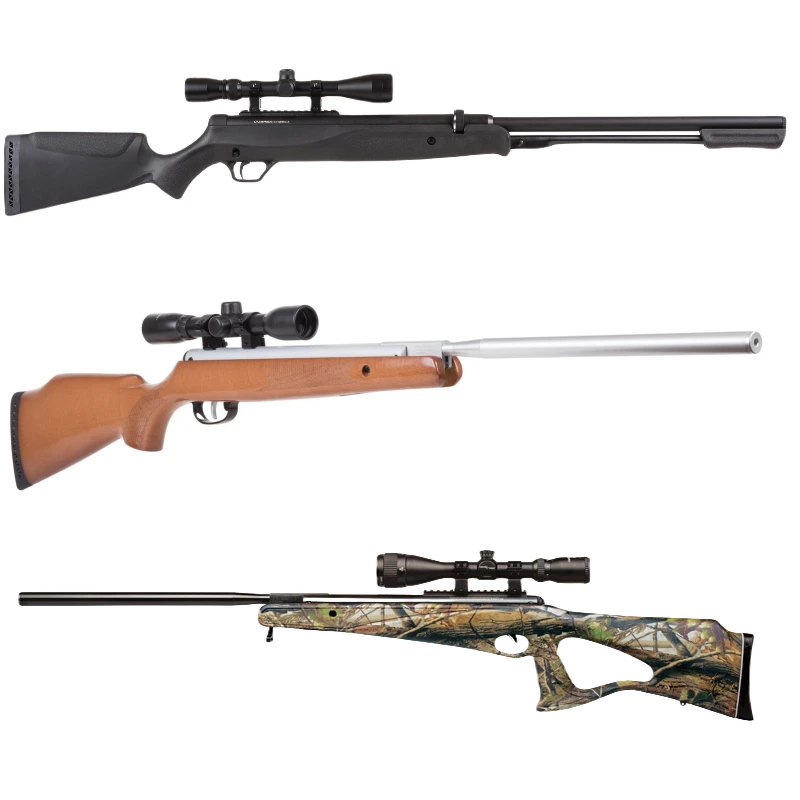
Advantages of Gas-Piston Air Rifles:
- Smooth Shooting: Gas-piston rifles offer smoother shooting and reduced recoil compared to traditional spring-piston rifles, leading to improved accuracy.
- Consistency in All Weather Conditions: Unlike spring-piston rifles, gas-piston rifles are less affected by temperature and weather changes, making them more reliable for consistent shooting.
- Durable and Long-lasting: Since there are no metal coils that can wear out over time, gas-piston rifles tend to have a longer lifespan and require less maintenance.
Disadvantages of Gas-Piston Air Rifles:
- Cost: Gas-piston rifles can be more expensive than spring-piston rifles, which may deter some budget-conscious buyers.
- Limited DIY Repairs: Gas-piston systems are sealed units, which means they can be challenging to repair or modify compared to spring-piston rifles.
- Difficulty in Cocking: Some gas-piston rifles can be harder to cock compared to spring-piston rifles, which may not be suitable for shooters with limited physical strength.
Gas-Piston Air Rifles on Amazon
Whether you’re into target shooting or pest control, these rifles offer reduced recoil, weather resistance, and lasting durability. With customer reviews, detailed product descriptions, and convenient shipping options, Amazon provides everything you need to make an informed decision and find the perfect Gas-Piston air rifle for your shooting needs.
4. CO2-Powered Air Rifles
CO2-powered air rifles are a popular choice for plinking, casual shooting, and backyard fun. These rifles use small CO2 cartridges as the power source, which are inserted into the rifle’s reservoir. When the trigger is pulled, a small amount of CO2 gas is released, propelling the pellet.

Advantages of CO2-Powered Air Rifles:
- Semi-Automatic Options: CO2-powered air rifles can be semi-automatic, allowing for quick follow-up shots without the need to cock the rifle between shots.
- Ease of Use: These rifles are effortless to operate, making them a great option for beginners and recreational shooters.
- Minimal Recoil: CO2-powered rifles generally have minimal recoil, making them easy to handle, especially for younger or less experienced shooters.
Disadvantages of CO2-Powered Air Rifles:
- Temperature Sensitivity: CO2 gas is sensitive to temperature changes, which can affect the rifle’s performance, especially in colder weather.
- Limited Shot Count: Each CO2 cartridge typically provides around 30-100 shots, depending on the rifle’s design and caliber. This limits the number of shots before you need to replace the cartridge.
- Ongoing Cost of CO2 Cartridges: Regularly purchasing CO2 cartridges can add to the ongoing cost of shooting with CO2-powered air rifles.
CO2-Powered Air Rifles on Amazon
Whether you’re plinking in the backyard or engaging in casual shooting, these rifles offer semi-automatic options, minimal recoil, and hassle-free shooting. With customer reviews, detailed product descriptions, and convenient shipping options, Amazon makes it easy for you to find the perfect CO2-Powered air rifle that suits your shooting preferences.
5. Multi-Pump Pneumatic Air Rifles
Multi-pump pneumatic air rifles, also known as pump-action air rifles, are manually charged by pumping a lever or forearm multiple times. Each pump compresses air into an onboard reservoir, and the number of pumps determines the pellet’s velocity.
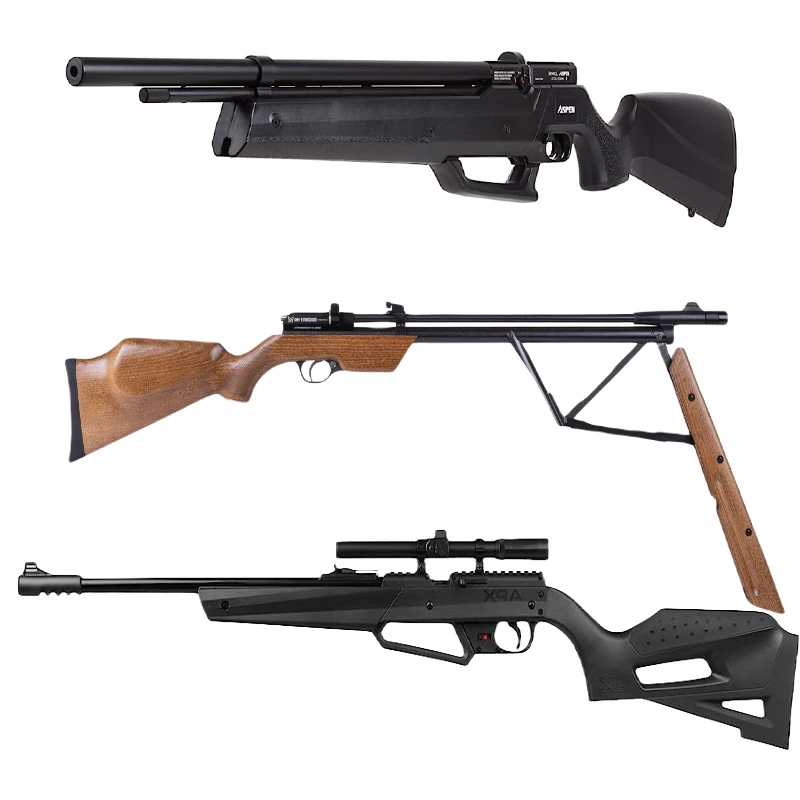
Advantages of Multi-Pump Pneumatic Air Rifles:
- Variable Power Control: The ability to control the number of pumps allows shooters to adjust the rifle’s power, making it versatile for different shooting distances.
- No External Power Source: Multi-pump rifles do not rely on external power sources like CO2 or pre-charged air, making them independent and easy to use in various environments.
- Great for Skill Development: The pumping action required to charge the rifle can help build strength and discipline in shooters, making it an excellent option for training and skill development.
Disadvantages of Multi-Pump Pneumatic Air Rifles:
- Pumping Effort: Repeatedly pumping the rifle can be physically demanding, especially for younger or less strong shooters.
- Shot Consistency: Achieving shot-to-shot consistency can be challenging with multi-pump rifles, as each pump may deliver a slightly different amount of compressed air.
- Slower Rate of Fire: The need to pump between shots can slow down the shooting process, which may not be ideal for scenarios requiring quick follow-up shots.
Multi-Pump Pneumatic Air Rifles on Amazon
Whether you’re a skilled shooter looking to fine-tune your shots or a beginner seeking a user-friendly option, these rifles offer adjustable power settings, consistency, and excellent accuracy. With customer reviews, detailed product descriptions, and convenient shipping options, Amazon provides all the tools you need to find the perfect Multi-Pump Pneumatic air rifle that matches your shooting preferences.
6. Single-Stroke Pneumatic Air Rifles
Single-stroke pneumatic air rifles, also known as SSP air rifles, are similar to multi-pump rifles, but with one key difference: they only require a single pump to charge the rifle for one shot. These rifles typically have an integrated pump lever or handle, making them easy to operate.
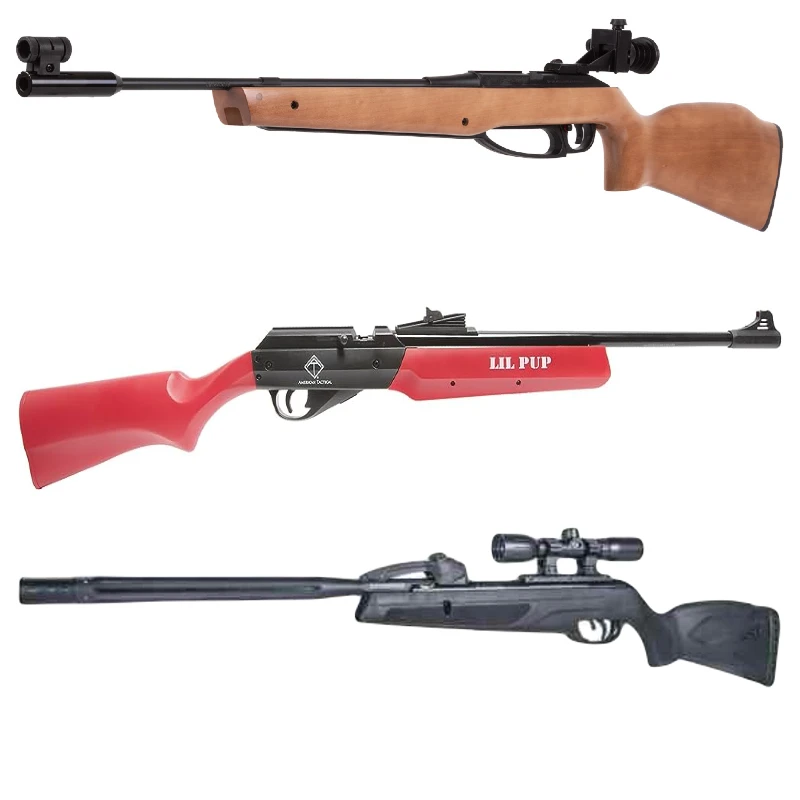
Advantages of Single-Stroke Pneumatic Air Rifles:
- Convenience: SSP rifles are incredibly convenient to use since a single pump is all that’s needed to charge the rifle for each shot.
- Consistency: With only one pump required, SSP rifles offer more consistent shot-to-shot performance compared to multi-pump rifles.
- Quiet Operation: SSP rifles are often quieter than other types of air rifles, making them ideal for backyard shooting or areas with noise restrictions.
Disadvantages of Single-Stroke Pneumatic Air Rifles:
- Limited Power: The power output of SSP rifles is generally lower than other types of air rifles, which may limit their effective range.
- Rate of Fire: As with multi-pump rifles, the single-stroke action can slow down the rate of fire in scenarios requiring quick follow-up shots.
- Skill Level Required for Accuracy: Achieving accuracy with SSP rifles requires good shooting technique and consistent pumping action, which may be challenging for beginners.
Single-Stroke Pneumatic Air Rifles on Amazon
Whether you’re a beginner looking for an effortless shooting experience or an enthusiast seeking consistent performance, these rifles offer convenience, quiet operation, and reliable accuracy. With customer reviews, detailed product descriptions, and convenient shipping options, Amazon makes it easy for you to find the perfect Single-Stroke Pneumatic air rifle that aligns with your shooting goals.
7. Break Barrel Air Rifles: The Versatile and Popular Choice
Break Barrel Air Rifles are among the most popular and versatile types of air rifles in the market. As the name suggests, these rifles feature a barrel that can be “broken” or hinged down from the main body of the rifle to cock the gun. This action compresses a spring or gas piston, preparing the rifle for the next shot. Break barrel rifles are loved for their simplicity, easy maintenance, and wide availability in various calibers and designs.
Advantages of Break Barrel Air Rifles:
- Ease of Use: Break barrel rifles are straightforward to operate, making them an excellent choice for beginners and experienced shooters alike.
- Powerful Shots: These rifles often deliver powerful shots, making them suitable for target shooting and small game hunting.
- Affordable: Break barrel rifles are generally more budget-friendly than some other types of air rifles, making them accessible to a wider range of shooters.
Disadvantages of Break Barrel Air Rifles:
- Recoil and Hold Sensitivity: Like other spring and gas-piston rifles, break barrel rifles generate recoil, which may require shooters to develop proper hold and technique for improved accuracy.
- One Shot at a Time: Each shot requires the shooter to break the barrel and cock the rifle manually, which can slow down the shooting process compared to other repeater-style air rifles.
8. Side Lever Air Rifles: Smooth and Easy Operation
Side Lever Air Rifles are known for their sleek design and smooth shooting action. Unlike break barrel rifles, these rifles have a lever located on the side of the gun that is used to cock the rifle and prepare it for shooting. The side lever design allows for quick and effortless reloading, making them popular among competitive shooters and enthusiasts who enjoy a faster rate of fire.
Advantages of Side Lever Air Rifles:
- Quick Reloading: The side lever design enables shooters to cock the rifle and load the pellet swiftly, allowing for a faster rate of fire compared to break barrel rifles.
- Consistent Shooting: Side lever rifles often provide consistent shooting performance, contributing to better accuracy and grouping of shots.
- Elegant Design: The side lever adds a touch of elegance to the rifle’s appearance, making it visually appealing to many shooters.
Disadvantages of Side Lever Air Rifles:
- Limited Shot Count: Like most non-PCP air rifles, side lever rifles are single-shot or magazine-fed, which can limit the number of shots available before reloading.
- Price Point: Side lever rifles can be more expensive than break barrel rifles, which may be a consideration for shooters on a budget.
9. Underlever Air Rifles: A Classic Design with Precision
Underlever Air Rifles are reminiscent of classic hunting rifles and are prized for their accuracy and precision. These rifles feature an underlever located beneath the barrel that is used to cock the gun and load the pellet. Underlever rifles are known for their solid construction, reduced recoil, and consistent performance.
Advantages of Underlever Air Rifles:
- Accuracy: Underlever rifles are highly regarded for their exceptional accuracy, making them a popular choice for target shooting and competitions.
- Reduced Recoil: The underlever design helps to reduce recoil, resulting in improved stability and follow-up shot accuracy.
- Higher Shot Count: Many underlever rifles come with larger air reservoirs, providing a higher shot count compared to some other non-PCP air rifles.
Disadvantages of Underlever Air Rifles:
- Cocking Effort: Underlever rifles may require more effort to cock compared to side lever or break barrel rifles, which may not be suitable for all shooters.
- Limited Rate of Fire: Like other non-PCP air rifles, underlever rifles are not semi-automatic or fully automatic, which means each shot requires manual cocking.
10. Repeating Air Rifles: Efficiency and Quick Firepower
Repeating Air Rifles, also known as multi-shot or semi-automatic air rifles, offer shooters the ability to fire multiple shots without manually reloading after each shot. These rifles feature magazines that can hold several pellets, allowing for quick follow-up shots. Repeating air rifles are great for those who enjoy the efficiency and rapid firepower that comes with semi-automatic action.
Advantages of Repeating Air Rifles:
- Rapid Firepower: Repeating air rifles offer quick follow-up shots, making them ideal for shooting scenarios requiring multiple shots in succession.
- Efficiency: With multi-shot magazines, these rifles reduce the time spent on reloading between shots, maximizing shooting enjoyment.
- Versatility: Repeating air rifles come in various calibers and styles, catering to a wide range of shooting preferences and applications.
Disadvantages of Repeating Air Rifles:
- Price: Repeating air rifles can be more expensive than single-shot rifles due to their semi-automatic mechanism and magazine design.
- Maintenance: The magazine mechanism requires proper maintenance to ensure reliable feeding and function.
11. Big Bore Air Rifles: Powerful and Effective for Hunting
Big Bore Air Rifles, as the name suggests, are known for their larger caliber sizes, delivering more power and energy compared to traditional air rifles. These rifles are suitable for hunting larger game and can produce energy levels close to that of firearms, making them a formidable choice for outdoor pursuits.
Advantages of Big Bore Air Rifles:
- Hunting Capability: Big Bore rifles are powerful enough for hunting medium to large-sized game, providing an ethical and challenging hunting experience.
- High Energy Output: These rifles offer high muzzle energy, making them effective for longer shooting distances.
- Quality Construction: Big Bore rifles are typically built with robust materials to withstand the higher pressures generated by the larger caliber.
Disadvantages of Big Bore Air Rifles:
- Cost: Due to their specialized design and construction, Big Bore rifles can be more expensive than standard air rifles.
- Ammunition Cost: Ammunition for Big Bore rifles can be more costly than pellets for smaller caliber rifles.
12. Competition Air Rifles: Precision Tools for Serious Shooters
Competition Air Rifles are designed specifically for precision shooting and are the preferred choice of serious shooters and competitive marksmen. These rifles are engineered to deliver exceptional accuracy, consistency, and stability to give shooters a competitive edge.
Advantages of Competition Air Rifles:
- Precision Accuracy: Competition rifles are built with meticulous attention to detail, ensuring unparalleled accuracy and shot-to-shot consistency.
- Customization Options: These rifles often allow for extensive customization, including adjustable stocks, triggers, and other components, tailored to the shooter’s preferences.
- Quality Craftsmanship: Competition rifles are crafted with high-quality materials and precision engineering, reflecting their top-tier performance.
Disadvantages of Competition Air Rifles:
- Price: Competition rifles can be at the higher end of the price spectrum, reflecting their premium design and performance.
- Specialized Use: These rifles are optimized for precision shooting and may not be as versatile for other shooting scenarios.
Choosing the Right Air Rifle for You
Now that you have a better understanding of the different types of air rifles available, it’s time to choose the one that best suits your needs and preferences. Here are some factors to consider:
- Intended Use: Determine whether you’ll be using the air rifle for target shooting, pest control, plinking, or hunting. Different types of rifles excel in different scenarios.
- Budget: Consider how much you’re willing to spend on an air rifle. Spring-piston and CO2-powered rifles are generally more affordable, while PCP rifles tend to be more expensive.
- Power and Accuracy: If you prioritize accuracy and power, PCP or gas-piston rifles might be your best bet. If you’re looking for a more casual shooting experience, spring-piston or CO2-powered rifles are great options.
- Maintenance: Consider the level of maintenance you’re comfortable with. PCP rifles require more maintenance than spring-piston or gas-piston rifles.
- Shooting Frequency: If you plan to shoot frequently and don’t mind pumping, multi-pump or single-stroke pneumatic rifles can be economical choices.
- Ergonomics and Design: Pay attention to the rifle’s weight, balance, and overall design. It’s essential to choose a rifle that feels comfortable and natural in your hands.
Remember, the best air rifle for you ultimately depends on your personal preferences, shooting goals, and budget. Take your time to explore different options, read reviews, and, if possible, try out different rifles before making your final decision. Happy shooting!
FAQs
There are several types of air rifles, including spring-piston, pre-charged pneumatic (PCP), gas-piston, CO2-powered, multi-pump pneumatic, and single-stroke pneumatic rifles.
For beginners, spring-piston and CO2-powered rifles are great options due to their ease of use and affordability. They provide an excellent introduction to the world of air rifle shooting.
PCP air rifles are known for their superior accuracy due to their consistent airflow and minimal recoil. These rifles are a popular choice among serious target shooters.
CO2-powered rifles can be used for small game hunting and pest control, but their power and range are more limited compared to PCP or gas-piston rifles.
Multi-pump pneumatic rifles offer variable power control, allowing shooters to adjust the number of pumps for different shooting distances, making them versatile for various scenarios.
Gas-piston rifles generally require less maintenance than spring-piston rifles since they don’t have metal coils that can wear out. However, regular maintenance is still essential for optimal performance.
While single-stroke pneumatic rifles offer consistency and convenience, they may not be the best choice for competitive shooting due to their limited power and rate of fire.
Yes, PCP air rifles require an external power source to charge their air reservoirs. This can be a high-pressure hand pump, a scuba tank, or a specialized air compressor.
Yes, gas-piston rifles are generally less affected by weather conditions, such as temperature changes, compared to spring-piston rifles, which can lead to more consistent shooting performance.
Spring-piston and CO2-powered air rifles are typically more budget-friendly compared to PCP or gas-piston rifles, making them great options for shooters on a tight budget.
Contents
- Best 12 Types Of Air Rifles: Find Your Perfect Match!
- 1. Spring-Piston Air Rifles
- 2. Pre-Charged Pneumatic (PCP) Air Rifles
- 3. Gas-Piston Air Rifles
- 4. CO2-Powered Air Rifles
- 5. Multi-Pump Pneumatic Air Rifles
- 6. Single-Stroke Pneumatic Air Rifles
- 7. Break Barrel Air Rifles: The Versatile and Popular Choice
- 8. Side Lever Air Rifles: Smooth and Easy Operation
- 9. Underlever Air Rifles: A Classic Design with Precision
- 10. Repeating Air Rifles: Efficiency and Quick Firepower
- 11. Big Bore Air Rifles: Powerful and Effective for Hunting
- 12. Competition Air Rifles: Precision Tools for Serious Shooters
- Choosing the Right Air Rifle for You
- FAQs
